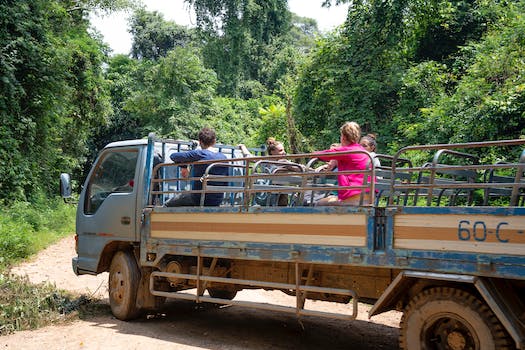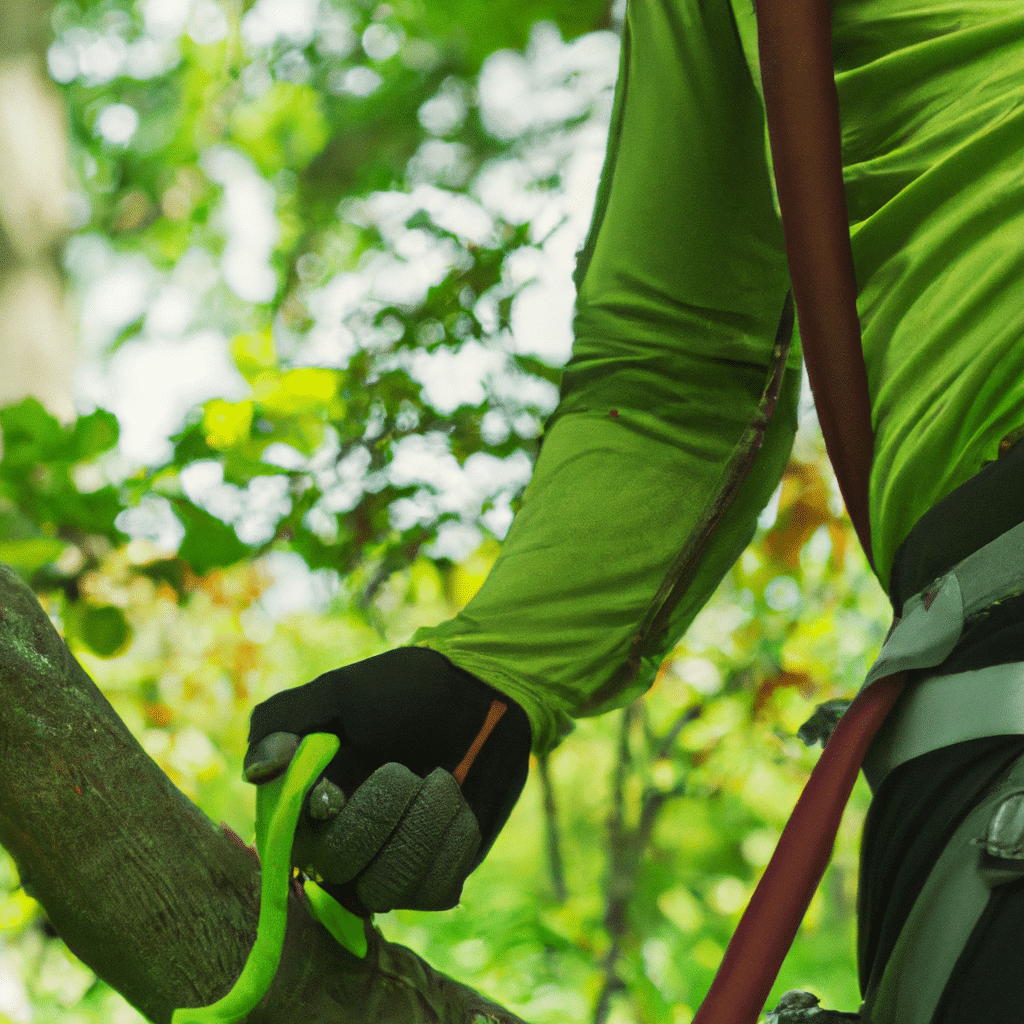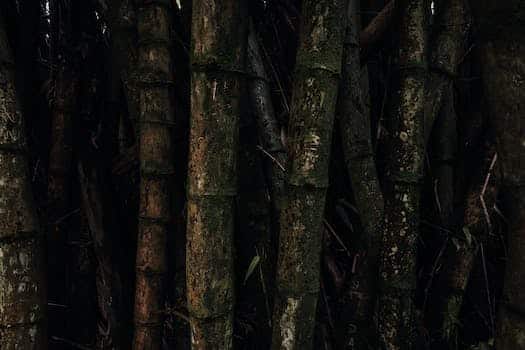The Amazon Rainforest, known as the ‘Lungs of the Earth’, is a mesmerizing and biodiverse ecosystem that captivates the imagination of nature enthusiasts worldwide. Spanning across nine South American countries, this enchanting rainforest is home to an incredible array of wildlife species, both known and undiscovered. From the majestic jaguars and colorful macaws to the elusive pink river dolphins and fascinating leaf-cutter ants, the Amazon Rainforest offers a truly unparalleled experience for those seeking to explore the wonders of nature.
- 1. Introduction
- 1.1. Overview of the Amazon rainforest
- 1.2. Importance of the Amazon rainforest
- 1.3. Biodiversity in the Amazon rainforest
- 1.4. Threats to the Amazon rainforest
- 1.5. Purpose of the article
- 2. Exploring the Amazon Rainforest
- 2.1. Choosing the right tour
- 2.2. Popular destinations within the Amazon rainforest
- 2.3. Guided vs. independent exploration
- 2.4. Preparation and necessary equipment
- 2.5. Safety precautions
- 3. Unique Wildlife of the Amazon Rainforest
1. Introduction
The Amazon Rainforest, often referred to as the ‘Lungs of the Earth,’ is a vast and mesmerizing ecosystem that is home to an incredible array of wildlife. Spanning over 2.1 million square miles, it covers parts of Brazil, Peru, Colombia, Venezuela, Ecuador, Bolivia, Guyana, Suriname, and French Guiana. This tropical rainforest is considered one of the most biodiverse places on the planet, housing millions of plant and animal species, many of which are yet to be discovered. From the majestic jaguars and colorful macaws to the elusive pink river dolphins and tiny poison dart frogs, the Amazon Rainforest offers a captivating experience for nature enthusiasts and wildlife lovers. In this article, we will delve into the enchanting wildlife that inhabits this extraordinary rainforest, exploring its unique characteristics and highlighting some of its incredible inhabitants.
1.1. Overview of the Amazon rainforest
The Amazon rainforest, also known as the Amazonia or the Amazon Jungle, is the largest tropical rainforest in the world. It spans over 5.5 million square kilometers and covers most of the Amazon Basin in South America. The rainforest is home to a diverse range of plant and animal species, making it one of the most biodiverse regions on the planet.
The Amazon rainforest is often referred to as the ‘lungs of the Earth’ due to its significant role in producing oxygen and regulating the global climate. It is estimated that the rainforest generates about 20% of the world’s oxygen.
The region experiences a tropical climate with high levels of rainfall throughout the year. This abundant rainfall supports the growth of dense vegetation, including towering trees, dense undergrowth, and various types of plants and flowers.
The wildlife in the Amazon rainforest is incredibly diverse, with thousands of species calling it home. From jaguars and anacondas to colorful birds and unique insects, the rainforest is a haven for wildlife enthusiasts and researchers.
Exploring the Amazon rainforest offers a captivating experience, allowing visitors to witness the wonders of nature up close. However, it is important to note that the rainforest is also facing numerous threats, including deforestation, illegal logging, and climate change. Efforts are being made to protect this invaluable ecosystem and raise awareness about its importance for the planet’s health and biodiversity.
1.2. Importance of the Amazon rainforest
The Amazon rainforest is of immense importance due to its rich biodiversity and crucial role in maintaining the global ecosystem. Spanning over 5.5 million square kilometers, it is the largest tropical rainforest in the world, covering nine countries including Brazil, Peru, Colombia, and Venezuela. The Amazon rainforest is often referred to as the ‘lungs of the Earth’ as it produces approximately 20% of the world’s oxygen. It acts as a carbon sink, absorbing and storing large amounts of carbon dioxide, thereby helping to mitigate climate change. Additionally, the rainforest plays a vital role in regulating the planet’s water cycle, influencing weather patterns around the world.
The Amazon rainforest is home to an astonishing array of wildlife, with thousands of species of plants, animals, insects, and microorganisms coexisting in this unique ecosystem. It is estimated that the rainforest houses around 40,000 plant species, 2.5 million insect species, and more than 2,000 species of birds and mammals. This incredible diversity makes the Amazon rainforest one of the most biodiverse places on Earth.
Moreover, the rainforest provides a habitat for numerous endangered and rare species, including the jaguar, giant river otter, harpy eagle, Amazon river dolphin, and many others. These species rely on the rainforest for their survival, and their preservation is essential for maintaining the delicate balance of the ecosystem.
In addition to its ecological importance, the Amazon rainforest also holds immense cultural significance. It is home to numerous indigenous communities who have lived in harmony with nature for centuries. These communities rely on the rainforest for their livelihoods, obtaining food, shelter, and medicine from its resources. Preserving the rainforest is not only crucial for protecting biodiversity but also for respecting and preserving the cultural heritage of these indigenous peoples.
In conclusion, the Amazon rainforest is a vital natural resource with global significance. Its importance extends beyond its borders, impacting climate, biodiversity, and cultural heritage. Exploring the enchanting wildlife of this majestic rainforest offers a glimpse into the wonders of nature and serves as a reminder of the urgent need to protect and conserve this precious ecosystem for future generations.
1.3. Biodiversity in the Amazon rainforest
The Amazon rainforest, also known as the Amazon jungle, is a vast and captivating ecosystem located in South America. Spanning over 7 million square kilometers, it is the largest tropical rainforest in the world. This incredible region is home to an astonishing array of plant and animal species, making it one of the most biodiverse places on Earth. From vibrant birds and exotic mammals to unique reptiles and fascinating insects, the Amazon rainforest is teeming with life. In this article, we will delve into the enchanting wildlife that inhabits this extraordinary ecosystem and explore the importance of biodiversity in the Amazon rainforest.
1.4. Threats to the Amazon rainforest
The Amazon rainforest, often referred to as the ‘Lungs of the Earth,’ is facing various threats that endanger its delicate ecosystem. Deforestation is one of the major threats, caused by human activities such as logging, agriculture, and mining. As trees are cut down, the habitat of numerous plant and animal species is destroyed, leading to a loss of biodiversity. Additionally, deforestation contributes significantly to climate change by releasing large amounts of carbon dioxide into the atmosphere. Another major threat to the Amazon rainforest is illegal wildlife trade, which involves the capture and trafficking of exotic animals and plants. This activity disrupts the natural balance of the rainforest and can lead to the extinction of vulnerable species. Pollution from industrial activities and oil spills also pose a significant threat to the Amazon, contaminating the water sources and harming aquatic life. Finally, climate change itself poses a threat to the rainforest. Rising temperatures and altered rainfall patterns can disrupt the delicate balance of the ecosystem, leading to the loss of species and increased vulnerability to fires. These threats highlight the urgent need for conservation efforts and sustainable practices to protect the enchanting wildlife of the Amazon rainforest.
1.5. Purpose of the article
The purpose of this article is to provide an in-depth exploration of the enchanting wildlife found in the Amazon Rainforest. By delving into the rich biodiversity of this unique ecosystem, readers will gain a deeper understanding of the various species that inhabit this vast and mysterious wilderness. Through vivid descriptions and informative insights, this article aims to captivate readers and inspire a sense of awe and appreciation for the wonders of the Amazon Rainforest’s wildlife.
2. Exploring the Amazon Rainforest
The Amazon Rainforest is a vast and enchanting wilderness that is home to some of the most diverse and fascinating wildlife on the planet. Exploring this magnificent rainforest is an adventure unlike any other, offering a chance to witness the wonders of nature up close.
One of the main highlights of exploring the Amazon Rainforest is the opportunity to encounter a wide variety of animal species. From the majestic jaguars and elusive ocelots to the playful river dolphins and colorful macaws, the rainforest is teeming with life. The dense vegetation provides the perfect habitat for these creatures, allowing them to thrive in their natural environment.
As you venture into the heart of the Amazon, you will have the chance to witness unique behaviors and interactions among the wildlife. The rainforest is a symphony of sounds, with the calls of howler monkeys echoing through the trees, the buzzing of insects filling the air, and the occasional roar of a jaguar in the distance. This immersive experience allows you to truly connect with nature and appreciate the delicate balance of life in the rainforest.
In addition to the fascinating wildlife, the Amazon Rainforest is also known for its breathtaking landscapes. From the winding rivers and cascading waterfalls to the towering trees and vibrant flowers, every corner of the rainforest offers a picturesque view. Exploring the lush greenery and discovering hidden gems along the way is a photographer’s dream.
To fully experience the magic of the Amazon Rainforest, it is recommended to join guided tours or eco-friendly expeditions. These knowledgeable guides will not only ensure your safety but also provide valuable insights into the ecosystem and its inhabitants. They can help you spot rare species, identify unique plants, and educate you about the importance of conservation.
In conclusion, exploring the Amazon Rainforest is a once-in-a-lifetime opportunity to immerse yourself in the beauty and wonders of nature. From the incredible wildlife to the stunning landscapes, every moment spent in the rainforest is filled with awe and amazement. So, grab your binoculars, pack your camera, and get ready for an unforgettable adventure in the enchanting Amazon Rainforest.
2.1. Choosing the right tour
Choosing the right tour for exploring the Amazon Rainforest is crucial to ensure a fulfilling and memorable experience. With its vast expanse of lush greenery and diverse wildlife, the Amazon Rainforest offers a plethora of options for nature enthusiasts and adventure seekers. Here are some key factors to consider when selecting the perfect tour:
1. Duration: Decide how much time you can dedicate to exploring the rainforest. Tours can range from a few days to several weeks, offering different levels of immersion.
2. Activities: Determine your interests and preferred activities. The Amazon Rainforest provides opportunities for activities such as hiking, wildlife spotting, canoeing, birdwatching, and even cultural interactions with indigenous communities.
3. Eco-friendly practices: Look for tour operators that prioritize sustainability and responsible tourism. Choose operators who support conservation efforts and minimize their impact on the fragile ecosystem.
4. Expert guides: Ensure that the tour provides knowledgeable and experienced guides who can enhance your understanding of the rainforest’s flora, fauna, and cultural heritage.
5. Safety measures: Check if the tour operator prioritizes safety by providing necessary equipment, trained staff, and emergency protocols.
Remember, each tour offers a unique experience, so take the time to research and compare different options before making a decision. By choosing the right tour, you can embark on an unforgettable journey through the enchanting wildlife of the Amazon Rainforest.
2.2. Popular destinations within the Amazon rainforest
The Amazon rainforest is home to numerous popular destinations that attract adventurers and nature enthusiasts from around the world. These destinations offer a unique opportunity to explore the mesmerizing beauty and rich biodiversity of this enchanting wilderness.
One of the most renowned destinations within the Amazon rainforest is Manaus, a bustling city located at the heart of the Brazilian Amazon. From Manaus, visitors can embark on exciting expeditions into the surrounding jungle, where they can witness incredible wildlife, hike through lush trails, and even stay in eco-lodges nestled amidst the dense rainforest.
Another popular destination is the Yasuni National Park, located in Ecuador. This national park is considered one of the most biodiverse areas on the planet, with a staggering array of plant and animal species. Exploring Yasuni allows visitors to encounter fascinating creatures like jaguars, giant river otters, and an astonishing variety of bird species.
For those seeking a more immersive experience, the Tambopata National Reserve in Peru is an ideal destination. This vast protected area offers unparalleled opportunities for wildlife spotting, including sightings of elusive species such as the giant river otter and the rare harpy eagle. Visitors can also enjoy activities like canoeing along the Amazon River and hiking through the lush rainforest trails.
The Amazon rainforest is also home to the iconic city of Iquitos, located in the Peruvian Amazon. Known as the gateway to the Amazon, Iquitos offers a blend of urban charm and natural wonders. Visitors can explore the vibrant markets, visit traditional indigenous communities, and take boat trips along the Amazon River to discover hidden corners of this remarkable rainforest.
These are just a few of the popular destinations within the Amazon rainforest that provide unforgettable experiences for those seeking to explore its enchanting wildlife and immerse themselves in the wonders of this extraordinary ecosystem.
2.3. Guided vs. independent exploration
When it comes to exploring the captivating beauty of the Amazon Rainforest, there are two main approaches: guided exploration and independent exploration. Each method offers a unique experience and allows visitors to immerse themselves in the enchanting wildlife that calls this incredible ecosystem home.
Guided exploration is a popular choice for many travelers, especially those who are visiting the Amazon for the first time. With a knowledgeable guide leading the way, visitors can feel confident that they are in safe hands and will have a structured itinerary that ensures they make the most of their time in the rainforest. Guides are well-versed in the flora and fauna of the Amazon and can provide valuable insights and information about the various species that inhabit this biodiverse region. Additionally, they know the best spots to spot elusive wildlife and can navigate through the dense vegetation with ease.
On the other hand, independent exploration offers a more flexible and adventurous experience. It allows visitors to set their own pace and discover the wonders of the rainforest at their own leisure. Without a guide, explorers have the freedom to wander off the beaten path and uncover hidden gems that may not be included in a typical guided tour. This method is ideal for those who prefer a more spontaneous and personalized adventure, where they can fully immerse themselves in the serenity and solitude of the Amazon.
Both guided and independent exploration have their own advantages and it ultimately depends on the preferences and comfort level of the individual traveler. Some may prefer the reassurance and expertise that comes with a guided tour, while others may relish in the thrill of exploring the unknown independently. Regardless of the chosen method, one thing is certain – the Amazon Rainforest promises a mesmerizing encounter with its enchanting wildlife that will leave visitors in awe.
2.4. Preparation and necessary equipment
To embark on an unforgettable journey through the mesmerizing Amazon Rainforest, proper preparation and necessary equipment are essential. Before setting foot into this enchanting wilderness, it is crucial to ensure that you have everything you need to make the most of your experience.
First and foremost, it is important to research and plan your trip thoroughly. Familiarize yourself with the region, its climate, and the specific areas of the rainforest you wish to explore. This will help you determine the best time to visit, as well as any potential risks or challenges you may encounter.
In terms of necessary equipment, there are a few items that should not be overlooked. Firstly, a sturdy pair of hiking boots or waterproof shoes is essential for navigating the muddy and uneven terrain of the rainforest. Additionally, lightweight and breathable clothing that provides protection from both insects and the elements is highly recommended.
Furthermore, investing in a quality backpack is crucial for carrying all your essentials. Make sure it is durable, waterproof, and has enough space to accommodate your belongings. Don’t forget to pack essentials such as a first aid kit, insect repellent, sunscreen, and a hat to protect yourself from the sun’s rays.
Another vital piece of equipment is a reliable and waterproof camera. The Amazon Rainforest is home to a plethora of unique and awe-inspiring wildlife, so capturing these moments is a must. Consider investing in a camera with a telephoto lens to capture the intricate details of the animals and plants you encounter.
Lastly, it is crucial to have a knowledgeable guide or tour operator accompany you during your exploration. The vastness and complexity of the Amazon Rainforest can be overwhelming, and having an experienced guide can greatly enhance your experience while ensuring your safety.
By adequately preparing and equipping yourself, you will be ready to embark on an extraordinary adventure through the captivating Amazon Rainforest.
2.5. Safety precautions
Exploring the Amazon Rainforest is an exhilarating adventure, but it is important to take certain safety precautions to ensure a memorable and safe experience. Here are some essential safety tips for your journey into the enchanting wildlife of the Amazon Rainforest:
1. Hire a knowledgeable guide: It is highly recommended to hire an experienced guide who is familiar with the rainforest’s terrain, wildlife, and potential dangers. They can provide valuable information, navigate through the dense vegetation, and ensure your safety at all times.
2. Pack appropriate gear: Make sure to pack essential gear such as sturdy hiking boots, long-sleeved clothing, insect repellent, a hat, and sunscreen. These items will protect you from various hazards including bites, stings, sunburn, and thorny plants.
3. Stay hydrated: The Amazon Rainforest can be hot and humid, so it is crucial to stay hydrated. Carry an adequate supply of water and drink regularly to avoid dehydration and heat-related illnesses.
4. Avoid touching or approaching wildlife: While the wildlife in the Amazon Rainforest is fascinating, it is important to maintain a safe distance and avoid touching or approaching the animals. Some species can be dangerous or aggressive if they feel threatened.
5. Be cautious of poisonous plants and insects: Familiarize yourself with the common poisonous plants and insects found in the rainforest. Avoid touching or consuming unknown plants and use caution when encountering insects, especially spiders and snakes.
6. Follow safety guidelines for water activities: If you plan to engage in water activities like swimming or boating, ensure that you follow all safety guidelines and use appropriate safety equipment. The rivers and lakes in the Amazon Rainforest may contain hidden dangers, such as strong currents or submerged obstacles.
7. Inform others about your plans: Before venturing into the rainforest, inform someone reliable about your itinerary and expected return. This way, if anything goes wrong, help can be summoned promptly.
Remember, the Amazon Rainforest is a unique and diverse ecosystem, and respecting its inhabitants and environment is crucial for your safety and the preservation of this enchanting wilderness.
3. Unique Wildlife of the Amazon Rainforest
The Amazon Rainforest is home to an incredible array of unique wildlife. This vast and diverse ecosystem is teeming with fascinating creatures that can’t be found anywhere else on the planet. From the mighty jaguar to the tiny poison dart frog, the Amazon is a paradise for nature enthusiasts and wildlife lovers. With over 2.5 million insect species, 40,000 plant species, and an estimated 400 mammal species, the rainforest is a treasure trove of biodiversity. Some of the most iconic wildlife species found in the Amazon include the Amazon pink river dolphin, the giant river otter, and the vibrant macaw. Exploring the Amazon Rainforest offers a once-in-a-lifetime opportunity to witness these incredible creatures in their natural habitat and learn about their important roles in maintaining the delicate balance of this extraordinary ecosystem.
3.1. Diverse animal species in the Amazon
The Amazon Rainforest is home to an incredibly diverse range of animal species. With its vast expanse of dense vegetation and unique ecosystems, the region supports a breathtaking array of wildlife. From the treetops to the forest floor, numerous species have adapted to thrive in this rich and complex environment.
One of the most iconic animals found in the Amazon is the jaguar. Known for its striking coat and powerful build, the jaguar is the largest big cat in the Americas. It is a skilled predator, capable of hunting a variety of prey including caimans, capybaras, and tapirs.
Another fascinating creature found in the Amazon is the pink river dolphin. These enchanting mammals are unique to the region and are known for their vibrant pink coloration. They inhabit the rivers and tributaries, gracefully swimming through the water and captivating observers with their beauty.
The Amazon Rainforest is also home to a vast array of bird species. From colorful macaws to elusive toucans, the skies are filled with a symphony of birdcalls. Many of these birds play a crucial role in pollination and seed dispersal, contributing to the overall health and diversity of the forest.
In addition to these charismatic animals, the Amazon is teeming with countless other species. From curious monkeys swinging through the branches to elusive reptiles like anacondas and caimans lurking in the rivers, the rainforest is a true haven for biodiversity. Each species plays a unique role in the intricate web of life that exists within this mesmerizing ecosystem.
Exploring the wildlife of the Amazon Rainforest offers a glimpse into a world unlike any other. It is a reminder of the immense beauty and complexity of nature, and the importance of preserving these unique habitats for future generations.
3.2. Iconic Amazonian animals
The Amazon Rainforest is home to a diverse range of iconic animals that have become synonymous with this vast and enchanting ecosystem. These unique creatures not only capture the imagination but also play a crucial role in maintaining the delicate balance of the rainforest ecosystem.
One of the most iconic Amazonian animals is the jaguar. Known for its powerful build and striking coat pattern, the jaguar is the largest big cat in the Americas. It is a skilled predator and a symbol of strength and agility. With its ability to climb trees and swim, the jaguar is well adapted to the dense forests and waterways of the Amazon.
Another fascinating Amazonian animal is the pink river dolphin, also known as the boto. This unique freshwater dolphin species is famous for its vibrant pink color and long snout. It is known for its intelligence and playful behavior, often seen leaping out of the water and interacting with humans. The pink river dolphin is a symbol of the Amazon and is cherished by the local communities.
The Amazon Rainforest is also home to the giant river otter, a social and highly vocal species. With its sleek and streamlined body, the giant river otter is well adapted for swimming and hunting in the rivers and lakes of the Amazon. These charismatic creatures are known for their close-knit family bonds and their impressive vocalizations.
Additionally, the Amazon Rainforest is teeming with various species of monkeys, such as the capuchin monkey, howler monkey, and squirrel monkey. These agile and intelligent primates are a common sight in the treetops, swinging from branch to branch and foraging for fruits and insects. They play a crucial role in dispersing seeds and maintaining the forest’s biodiversity.
These are just a few examples of the iconic Amazonian animals that make the rainforest such a captivating and unique habitat. Their presence highlights the importance of conserving and protecting this extraordinary ecosystem for future generations.
3.3. Endangered species in the Amazon rainforest
The Amazon rainforest is home to a vast array of unique and fascinating wildlife. Among these, there are several species that are endangered and in need of conservation efforts. The rich biodiversity of the Amazon makes it a critical habitat for countless species, many of which cannot be found anywhere else on Earth.
One such endangered species in the Amazon rainforest is the Amazon river dolphin. Also known as the pink river dolphin or boto, this species is famous for its vibrant pink coloration. Unfortunately, the population of these dolphins has been declining due to habitat loss, pollution, and illegal hunting.
Another endangered species found in the Amazon rainforest is the giant river otter. These playful and social creatures are the largest otter species in the world. They are highly dependent on clean waterways and healthy fish populations for their survival. However, deforestation and pollution of rivers threaten their habitat and food sources.
The harpy eagle is another endangered species that can be spotted in the Amazon rainforest. This majestic bird of prey is known for its striking appearance, with a crown of feathers on its head. Loss of forest habitat and hunting pose significant threats to the survival of these magnificent birds.
It is crucial to protect and conserve these endangered species in the Amazon rainforest to maintain the delicate balance of its ecosystem. Efforts are being made by conservation organizations and local communities to safeguard their habitats, raise awareness, and combat illegal activities. By preserving the unique wildlife of the Amazon, we can ensure the survival of these incredible species for generations to come.
3.4. Birdwatching opportunities
The Amazon Rainforest is home to an incredible array of unique wildlife, making it a paradise for birdwatchers. With over 1,500 bird species, this vast ecosystem offers unparalleled opportunities for birdwatching enthusiasts. From colorful macaws and toucans to elusive harpy eagles and the iconic hoatzin, there is no shortage of fascinating avian species to discover.
One of the best places for birdwatching in the Amazon Rainforest is the Yasuni National Park in Ecuador. This biodiverse region boasts an impressive bird count, including species like the golden-headed quetzal, blue-crowned trogon, and the rare and endangered oilbird. Birdwatchers can explore the park’s lush forests, rivers, and oxbow lakes, where they may also spot other wildlife such as monkeys, sloths, and pink river dolphins.
Another hotspot for birdwatching is the Tambopata National Reserve in Peru. This protected area is renowned for its incredible bird diversity, with species like the magnificent Amazonian umbrella bird, the vibrantly colored macaws, and the striking black skimmer. Birdwatchers can navigate the reserve’s winding rivers and forest trails, immersing themselves in the sights and sounds of the rainforest while observing a wide variety of bird species.
To make the most of your birdwatching experience in the Amazon Rainforest, it is recommended to hire a local guide who has extensive knowledge of the area and its wildlife. These guides can help you identify bird species, locate their habitats, and provide valuable insights into their behavior and ecology. They also contribute to the conservation efforts of the rainforest by promoting responsible and sustainable tourism practices.
Whether you are a seasoned birder or a novice enthusiast, exploring the enchanting wildlife of the Amazon Rainforest through birdwatching is an unforgettable experience. The region’s rich biodiversity and the chance to encounter rare and endemic bird species make it a must-visit destination for any nature lover.
3.5. Interactions with wildlife
Interactions with wildlife in the Amazon Rainforest are truly unique and awe-inspiring. The vast expanse of the rainforest is home to an incredible array of wildlife species, many of which cannot be found anywhere else in the world. Exploring the enchanting wildlife of the Amazon offers the opportunity to witness extraordinary interactions between animals and their natural habitats.
One of the most fascinating aspects of the Amazon’s wildlife is the symbiotic relationships that exist between different species. For example, the Amazon River dolphin, also known as the pink river dolphin, has a special bond with local fishermen. These dolphins have learned to cooperate with the fishermen by driving fish towards their nets, benefiting both parties. It is a remarkable display of collaboration between humans and wildlife.
Another remarkable interaction is the pollination process carried out by bats and birds. The Amazon Rainforest is home to a wide variety of flowering plants, many of which rely on these animals for pollination. Bats, in particular, play a crucial role in the ecosystem by pollinating night-blooming plants. This intricate relationship showcases the interconnectedness of the Amazon’s wildlife.
The Amazon Rainforest is also known for its diverse bird species, making it a paradise for birdwatchers. Interactions between birds can be observed through elaborate courtship displays, territorial disputes, and cooperative behavior within flocks. The vibrant colors and unique behaviors of Amazonian birds make for a truly captivating experience.
Exploring the Amazon Rainforest provides an opportunity to witness firsthand the captivating interactions between wildlife species. It is a reminder of the delicate balance of nature and the importance of preserving these unique ecosystems for future generations.
Conclusion
In conclusion, the Amazon Rainforest is a truly enchanting place, teeming with diverse and exotic wildlife. Its lush greenery, vibrant colors, and unique ecosystem make it a must-visit destination for nature lovers. From the magnificent jaguars and playful monkeys to the colorful birds and fascinating insects, the Amazon Rainforest offers a captivating experience for those who dare to explore its depths. Whether you are an adventure seeker or a wildlife enthusiast, this mesmerizing rainforest will leave you in awe of its beauty and biodiversity.





